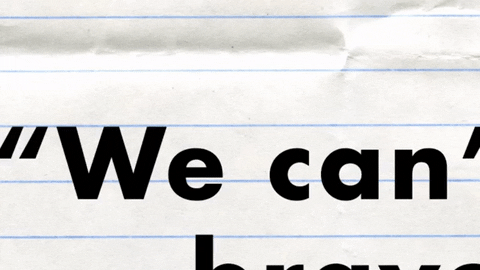When George Zimmerman went on trial four years ago for the shooting of 17-year-old Trayvon Martin, the Sanford (Florida) Police Department sent a request to the state’s attorney asking whether his death would be determined a “justifiable homicide.” Under Florida’s “stand your ground” laws, such a designation would allow Zimmerman to claim his killing of Martin occurred in self-defense — and he did so, successfully.
By the time the jury delivered a “not guilty” verdict for Zimmerman in 2013, “self-defense” had become an increasingly common rationalization for homicide cases in the U.S. as “stand your ground” laws proliferated state-by-state. In Florida, the rate of justifiable homicide rose 200% from 2005, when “stand your ground” went into effect, to 2013.
[quote position="right" is_quote="true"]The vast majority of killings of whites are committed by other whites, contrary to some folk wisdom.[/quote]
A new report by the Marshall Project published this month, which examines FBI data about 400,000 civilian homicides, finds that cases are far more likely to be determined “justifiable homicides” when the killer is white and the victim is black. In fact, while justifiable homicides only constituted 2% of all cases, that percentage swelled to 17% when the cases involved a white civilian killing a black civilian. According to the authors of the Marshall Project report:
“The vast majority of killings of whites are committed by other whites, contrary to some folk wisdom, and the overwhelming majority of killings of blacks is by other blacks. … But killings of black males by white people are labeled justifiable more than eight times as often as others. This racial disparity has persisted for decades and is hard to explain based solely on the circumstances reported by the police data.”
The phrase “justifiable homicide” is one of those oddities of a justice system that seeks to make room for human fallibility in legal classification and language — for example, homicides committed by domestic violence victims against their abusers. But these adjustments for the failures of human judgment end up accommodating prejudices and biases that disproportionately benefit nonblack defendants and victimize black victims. “It's not just white-on-black self-defense claims,” says Jody David Armour, a professor of law at the University of Southern California. “It's any self-defense claims that include a black victim, whether the shooter is white, black, Latino, or Asian.”
Armour is the author of “Negrophobia and Reasonable Racism: The Hidden Costs of Being Black in America,” a 1997 book that examined how unconscious racism against black people manifests systemically in institutions like the justice system.
The key legal test for determining whether a homicide was justifiable is something called the “reasonable person standard,” says Armour — in cases involving civilians or a police officer. The test asks one simple question: Would a reasonable person in this situation detect an imminent threat by the victim?
“The way the law defines 'reasonable' is not 'rational,'” says Armour. “Reasonable does not mean right. All reasonable means is 'typical.' 'Ordinary.' You're a reasonable person if you're an ordinary person, if you're the average person.”
A person’s “reasonableness” insulates them from accountability when their mistakes are determined to fall within the spectrum of “typical” human behavior and inadequacy. “The reasonable person test says you don't condemn somebody who's just expressed ordinary human frailty in whatever they've done,” says Armour. But human failure is not always natural or predetermined — it’s often influenced by the social environments in which we are raised.
“The problem with the ‘typical is reasonable’ approach, which is the one we use in a court, is that it would let off the hook a lot of, for example, Germans in Nazi Germany in 1939 or 1940,” adds Armour. “If they could say, ‘Hey, I was anti-Semitic but it was typical to be anti-Semitic. You can't blame me for being anti-Semitic if most people around me were.’”
[quote position="full" is_quote="true"]When someone white initiated the same bump, the subject was much more likely to interpret it as merely horseplay or dramatized.[/quote]
Though Charlottesville made it clear that anti-Semitism is on the rise in America, racism is undeniably a foundational characteristic of contemporary American society, embedded in the body politic. So it stands to be argued that a “reasonable” person in the United States is likely a racist one, too.
“We know that at an unconscious level, ordinary people harbor negative stereotypes about blacks,” says Armour. “And among those stereotypes that ordinary people harbor about blacks are that blacks are more violent and crime-prone. That stereotype can operate unconsciously, automatically.”
A 1976 study by University of California, Berkeley, professor Birt Duncan exemplifies the ways in which these unconscious beliefs function in real life. Duncan made his subjects — of varied races — view and evaluate a taped interaction between two people having a discussion about another colleague’s job placement. The conversation becomes heated, and one of them gets up to leave, “ambiguously” bumping the other person on their way out.
“When someone black initiated that ambiguous bump, the subjects were much more likely to interpret the bump as hostile or violent. When someone white initiated the same bump, the subject was much more likely to interpret it as merely horseplay or dramatized,” says Armour. This pattern of judgment was the same whether the subject was black or white. These findings reveal how “ordinary” Americans have been socialized to read aggression into the behaviors and movements of black people — behaviors that would otherwise be read as nonthreatening when performed by a white people.
“If 'reasonable' means 'typical,' then the question becomes, 'Does a typical person in America consider race, consider blackness, when they're assessing the dangerousness of an ambiguous or suspicious person?’” asks Armour. “And the tragic truth is, study after study shows — and we know it if we just consult our own intuition — that ordinary people in America, ordinary people do consider race when they're assessing someone's dangerousness.”
This is why, for example, black men frequently observe white women clutching their purses a little tighter when they walk past them on the street. It’s a psychological tic that reporter Frederick H. Lowe explored in an article for the Chicago Reader called the “The Clutch of Fear,” calling it a form of racist signaling. In it, he interviewed psychiatrist Carl Bell, who said: "It's a nonverbal kinetic that wears at a black man's self-esteem. A white woman sees a black man and she instantly stereotypes him as someone who plans to rape and rob her.”
There is a mental tax for these kinds of interactions, levied mostly against black men. “This type of projection depletes a black man's energy because he constantly thinks about it,” said Bell. “It limits his mobility. And it impinges on his life, because he's constantly kept off guard, preventing him from focusing on other issues."
And in places where guns are easily accessible, it’s not just a black person’s energy or mental health that is threatened — it’s their very life, as demonstrated in the case of Trayvon Martin. Zimmerman, an “ordinary” person, harboring many of the same prejudices that the white women in “The Clutch of Fear” cling to, determined that Martin’s behaviors were hostile and that Martin, a 17-year-old boy, posed an imminent threat to his life. Zimmerman’s possession of a gun allowed him to act on that split-second judgment with violence, taking Martin’s life.
But in the eyes of the law, Zimmerman’s killing was considered “justifiable” because his perceptions matched those of an “ordinary” jury. This legal application empties the word of its meaning — what becomes clear is that in at least one case of “justifiable homicide,” justice was not dispensed.
















 Representative Image: It take a special kind of heart to make room for a seventh child
Representative Image: It take a special kind of heart to make room for a seventh child  Representative Image: It take a special kind of heart to make room for a seventh child
Representative Image: It take a special kind of heart to make room for a seventh child 
 Visualization of a black holeImage via Canva
Visualization of a black holeImage via Canva

 Speaking in public is still one the most common fears among people.Photo credit: Canva
Speaking in public is still one the most common fears among people.Photo credit: Canva muhammad ali quote GIF by SoulPancake
muhammad ali quote GIF by SoulPancake

 Let us all bow before Gary, the Internet's most adventurous feline. Photo credit: James Eastham
Let us all bow before Gary, the Internet's most adventurous feline. Photo credit: James Eastham Gary the Cat enjoys some paddling. Photo credit: James Eastham
Gary the Cat enjoys some paddling. Photo credit: James Eastham James and Gary chat with Ryan Reed and Tony Photo credit: Ryan Reed
James and Gary chat with Ryan Reed and Tony Photo credit: Ryan Reed